Transforming Your Fort Washington Home: The Ultimate Guide to Landscape Design and Construction
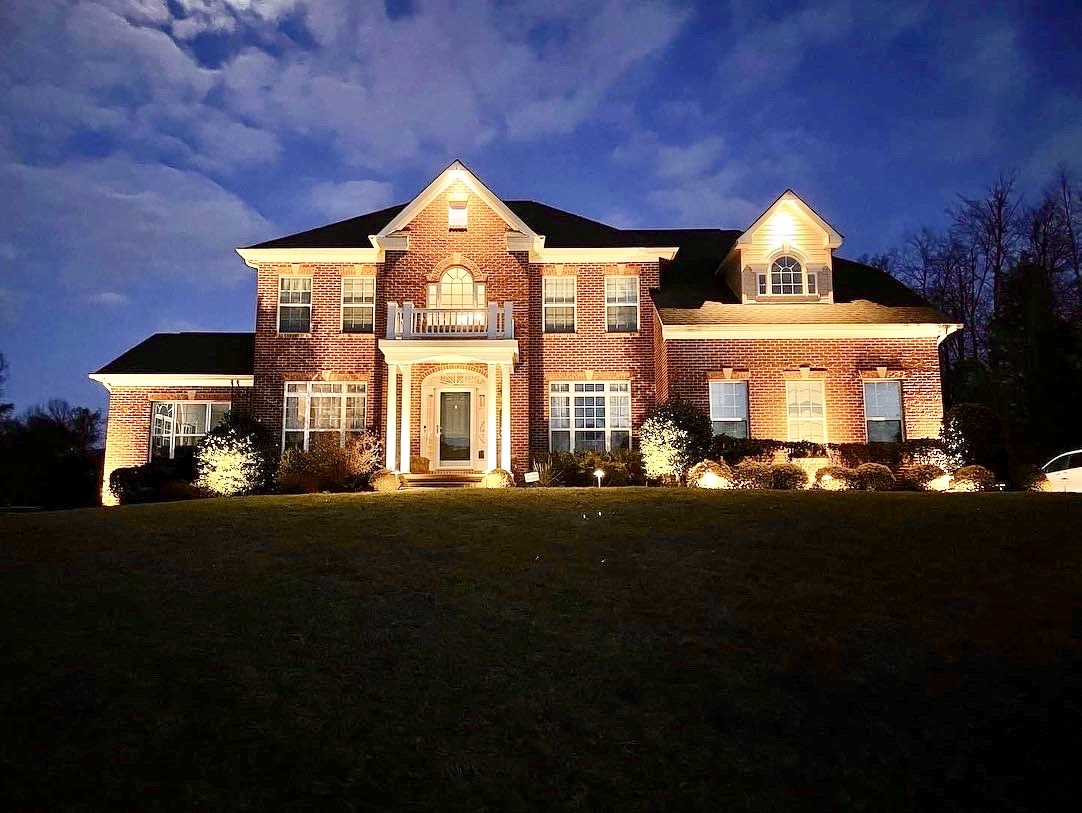
Looking out at a plain backyard can feel like a missed opportunity, especially when the right landscape design in Fort Washington can bring it all together. That open patch of land could be the place that turns heads in your neighborhood. The real challenge is knowing how to turn an empty space into the backyard of your dreams.
This guide lays out everything you need to plan a backyard you’ll actually use and enjoy. It’s built on real experience from professionals who know the area, the climate and what makes a design not just look good, but last. This guide walks you through the process step by step, with real insight on how to plan an outdoor space that fits your home, your lifestyle, and the way you actually live.
Envisioning Your Ideal Outdoor Space

Before you get into the design details, it helps to have a clear picture of what you want from your yard. Do you imagine a quiet place to read in the shade? A lively setup for summer cookouts with friends and family? Or maybe you want something low-maintenance that still looks great from season to season. Your space should reflect your lifestyle and fit seamlessly with your home, just like thoughtful Fort Washington landscape design should.
Start by thinking about how you use your yard now and how you’d like to use it going forward. Make a simple list of features or activities you care about, like dining outside, space for kids to play, or gardening. You can also gather inspiration from photos, magazines, or nearby landscapes you admire. These early ideas help your designer understand your style and create a plan that feels right for you.
Getting Started with a Consultation
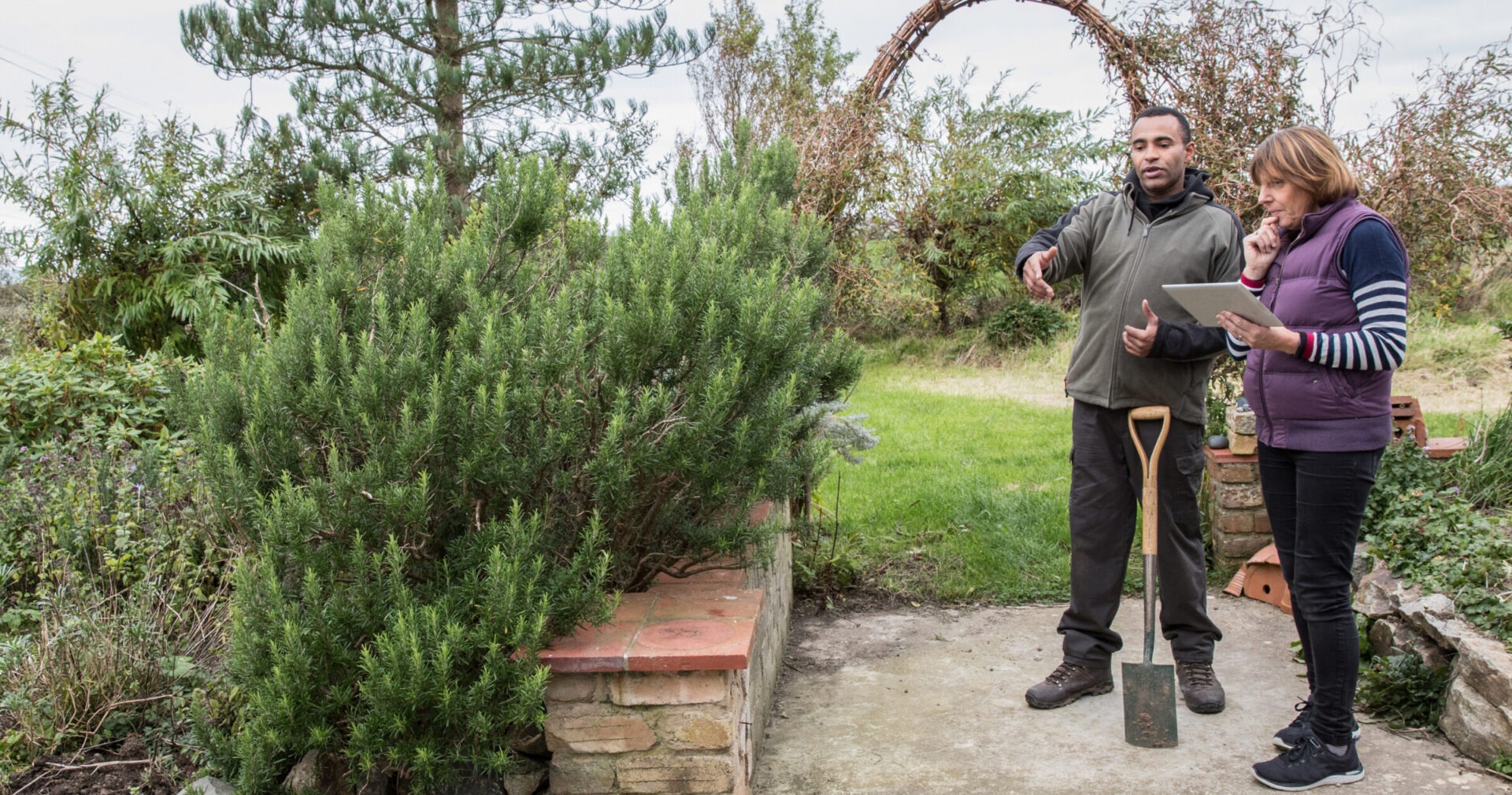
A great project starts with a good conversation. During your first meeting, you’ll talk through your vision, priorities, and any must-haves or deal-breakers. A good landscape designer will ask thoughtful questions and share examples of past work around Fort Washington that show what’s possible on a range of properties. This is also the time to be honest about what you want to spend, how involved you’d like to be, and how much upkeep you’re comfortable with.
Don’t hold back. Share your daily habits, what you love about your home, and what you don’t. All of this helps to shape the direction of the design and ensures your space will feel like an extension of your life, not just an addition to it.
Find Your Style

Your personal taste plays a big role in how your space will look and feel. Is clean, simple lines and modern finishes more your style? Or do you prefer cozy textures and amore natural vibe? Pinning down your style early helps make all the design choices easier as you choose things like materials, colors, and furniture.
A designer can help you narrow things down by showing you real-world examples and combinations that match your vibe. The goal is to create a space that fits with your home’s architecture and truly feels like it was made specifically for you.
This is where you’ll see your ideas take shape, and every piece starts to fall into place.
Designing for Small Yards in Fort Washington
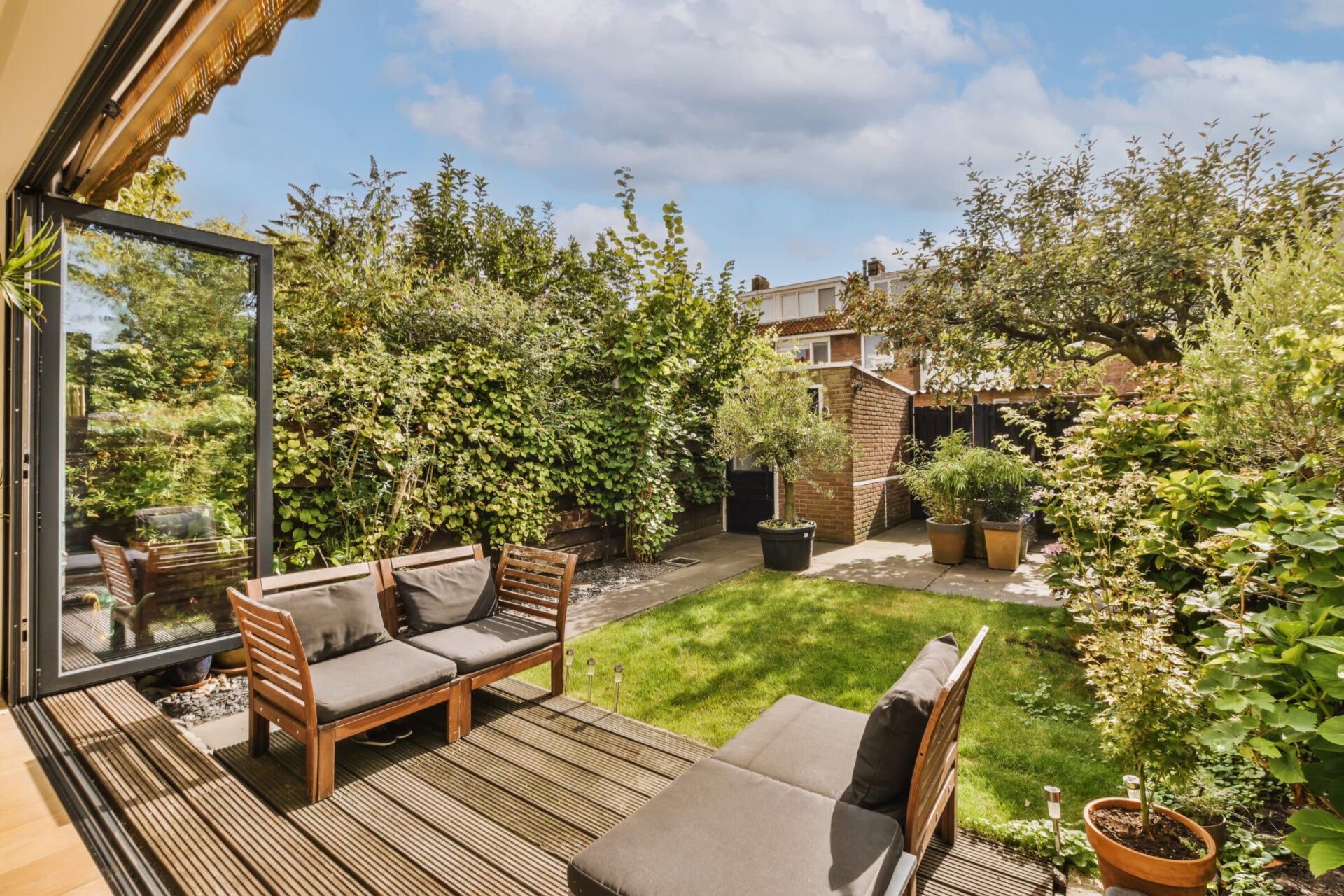
Not every Fort Washington property has acres to work with, but even small yards can make a statement. With the right layout, even tight outdoor spaces can be made to feel roomy while staying functional. The key is thinking in layers: ground-level interest, mid-level plantings, and taller elements like trellises or pergolas that create vertical appeal.
Multi-purpose features help, too. A built-in bench with storage, a narrow garden wall that doubles as seating, or a compact grilling nook can all make better use of limited space. Smart landscaping turns limitations into opportunities, creating a cozy and efficient outdoor area you’ll actually use.
Set a Real Budget
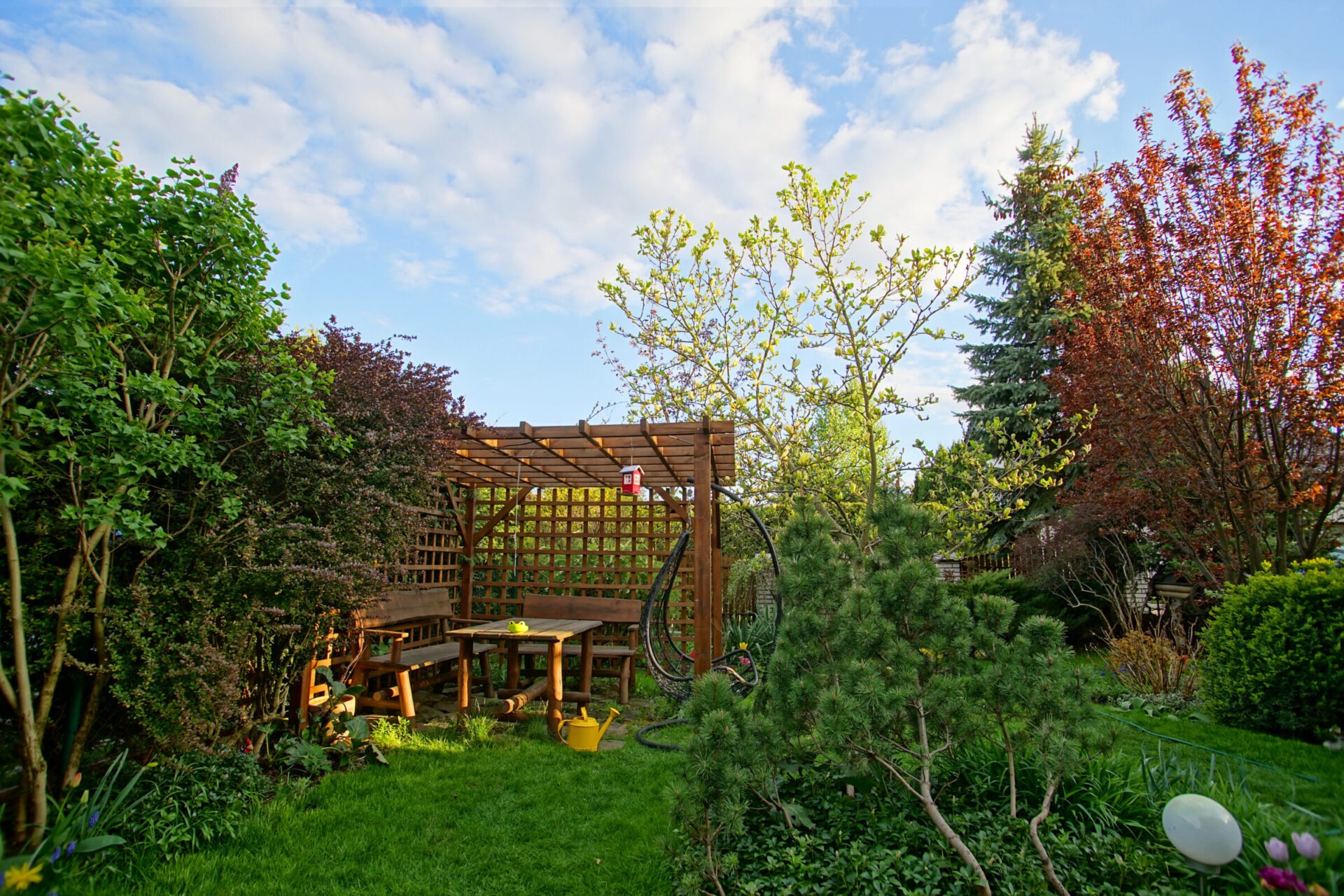
Knowing what you’re comfortable spending keeps your project on track from day one. Talk openly about budget during your first meetings as it helps your designer know what’s realistic and how to prioritize. Whether you’re working with a smaller budget or planning something more ambitious, there are always smart ways to balance cost, quality, and impact.
Think about where you’ll get the most value, maybe it’s a standout feature like a stone patio with built-in seating, a corner setup with natural flagstone and a fire pit, or a smart irrigation system that saves you time and money long-term. The more upfront you are, the better your design team can guide you toward choices that fit both your vision and your budget.
The Landscape Design Process
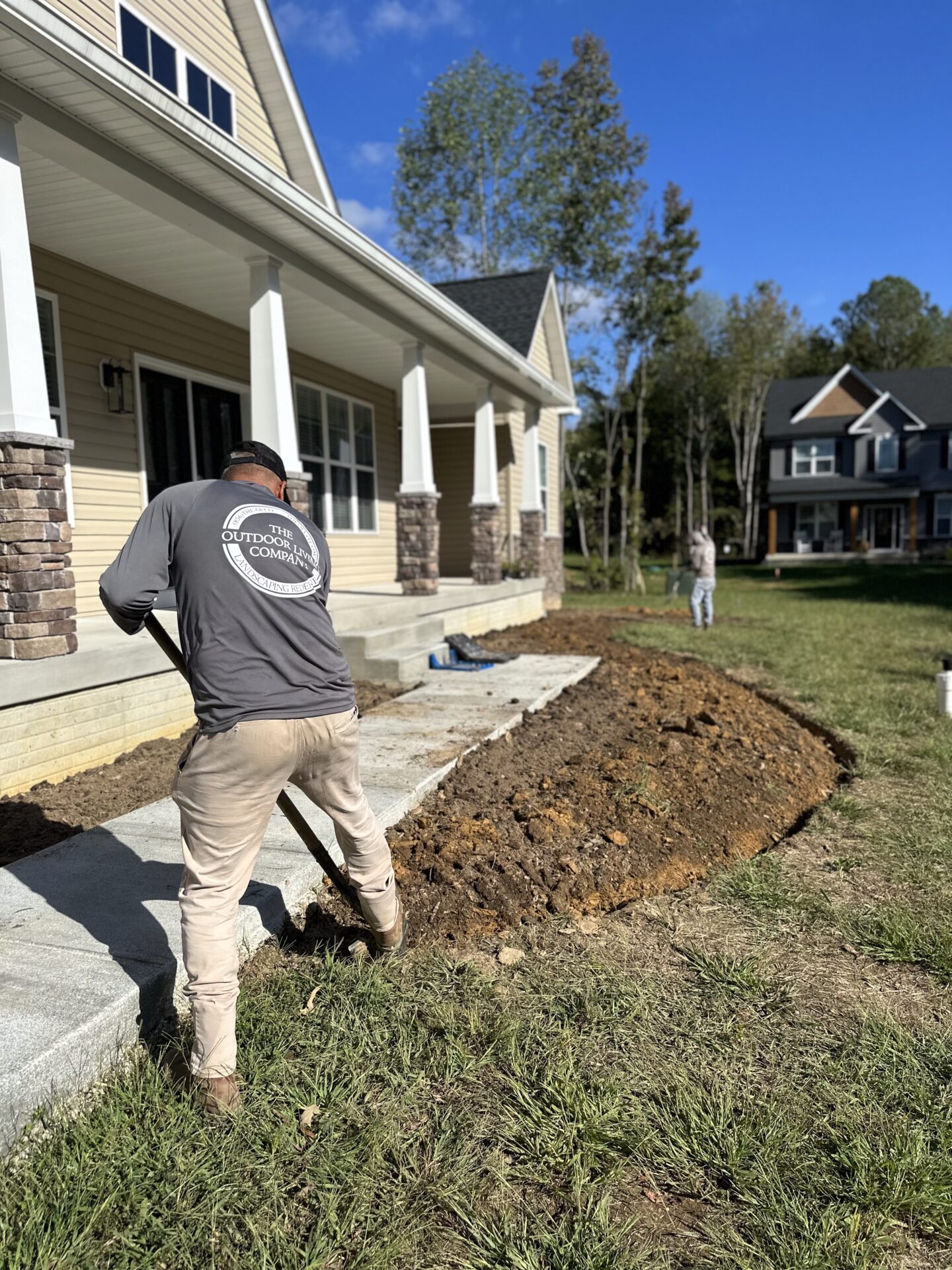
Once your vision is clear and your goals are set, it’s time to shape those ideas into a real plan. The design process is where creativity meets practical planning. Every step is about making sure the final result works for your space, your routine, and the natural conditions in Fort Washington.
Take a Look at the Site
It starts with walking the yard and looking closely. Things like where the sun hits, where water collects, the type of soil, and any existing features all come into play. This helps you figure out what’s possible and what might need a little extra planning.
Sometimes this first step reveals great opportunities, like a slope that could become a built-in seating wall or a shady corner that would be perfect for a hammock. The more the design works with your space, the better the results.
Build a Concept
Next comes sketching out the main layout. This is where you start to see the big picture on where your patio, plants, paths, and features might go. Your input here is important, so speak up about what feels right and what doesn’t. This is the moment to fine-tune the design and make sure it’s heading in the direction that works for you.
It’s a collaborative step, and each round of feedback brings you closer to a design that works for your space and your lifestyle.
Zoom In on the Details
Once the concept feels solid, the specifics come into play. Now’s when you figure out what materials to use, what kind of plants you want, and how everything will actually come together. You might get to see digital previews or mockups that help visualize how your space will look from different angles.
This is also the time to make sure everything follows Fort Washington building codes and practical considerations on things like drainage, access points, and long-term durability.
Final Design Package
The last step in the design phase is putting everything together in one clear plan. That means final drawings, a list of materials, a schedule, and a breakdown of how the build will unfold. When it’s all there in black and white, everyone’s on the same page, and the construction team knows exactly what to do.
Landscape Construction in Fort Washington
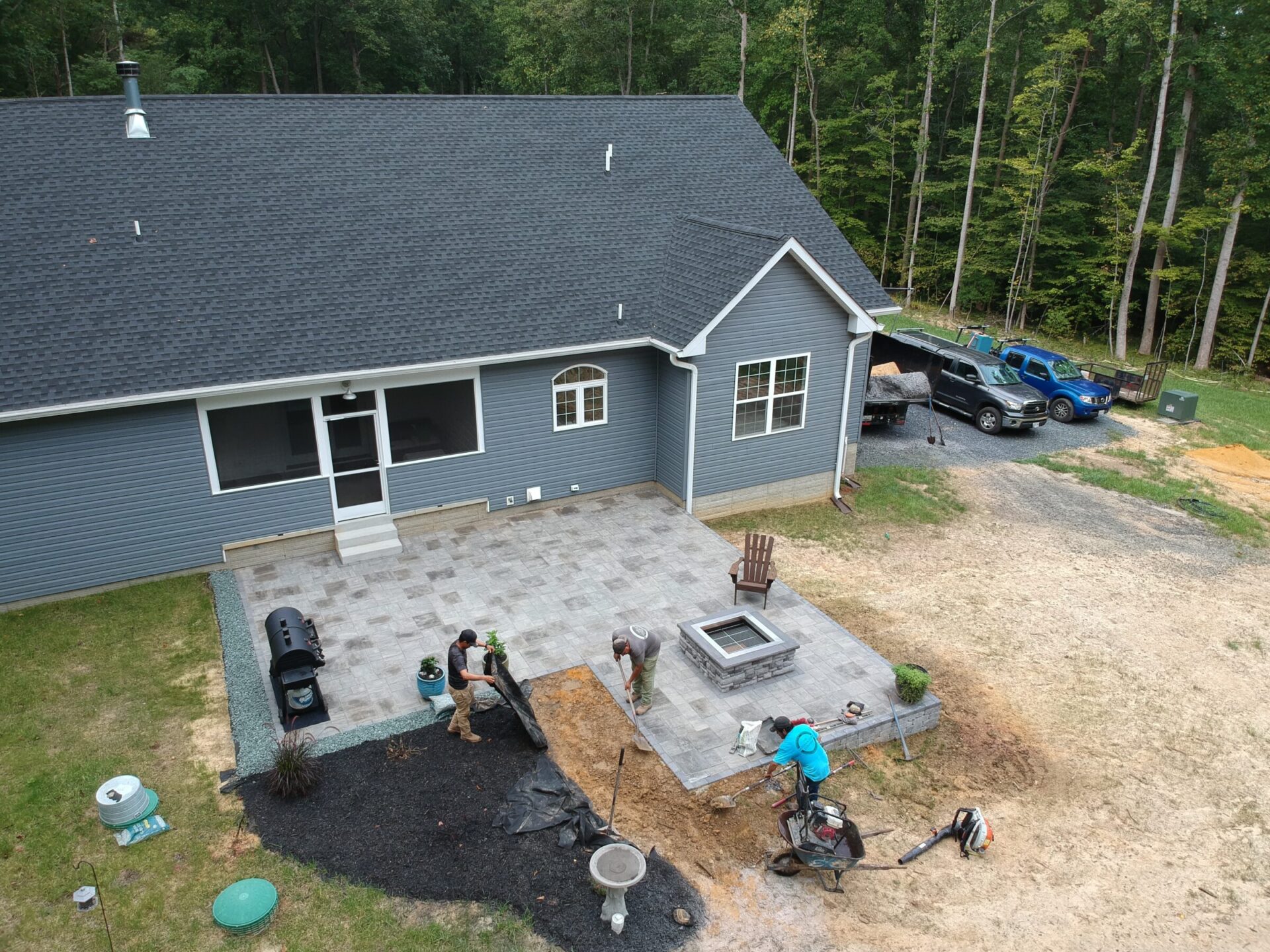
With the plan finalized, the landscape construction begins, bringing your Fort Washington property’s vision to life. This is the exciting stage where all your planning comes together, and the transformation truly starts to take shape.
Getting the Site Ready
Before anything gets built, the area needs to be cleared and prepped. That might mean removing old plants, leveling the ground, or improving drainage. Some yards also need upgrades like irrigation systems or electrical lines, especially if you’re adding lighting or a kitchen.
This part of the job might not look exciting, but it lays the foundation for everything else and helps avoid issues down the road.
Installing the Hardscape
Hardscapes are the bones of your space, this includes your patios, walkways, retaining walls, steps, outdoor kitchens, and more. These elements define how you’ll move through your yard and how the area will function. Materials like stone, pavers, concrete, or wood can set the tone for the rest of the design; stone feels timeless, pavers give a clean, modern look, concrete offers flexibility, and wood adds warmth and texture.
Good craftsmanship matters here. These are the parts of your yard that get used every day and need to hold up to weather and wear.
Bringing in the Plants
Once the structure’s in place, it’s time to bring the space to life with greenery. The right mix of plants makes a huge difference. Choose plants that look great and can handle Fort Washington’s seasons. Think colorful perennials for long-lasting blooms, hardy shrubs that hold their shape, native trees that thrive locally, or climbing vines for a touch of drama. The plants you pick help set the tone, so match your choices to how you want to feel while in the space.
Adding Personal Touches
Final touches are where your space really starts to reflect you. Maybe it’s the crackle of a fire pit on cool nights, the glow of path lights under the trees, or furniture that feels more like an invitation than a setup. These details create atmosphere, spark connection, and pull the whole design together so it genuinely feels like part of your home.
Custom Outdoor Living Structures

A well-designed outdoor space adds real purpose to your property. With the right structures in place, an open lawn can become a spot for cooking, relaxing, gathering, or simply enjoying the outdoors in comfort.
Outdoor Kitchens and Dining Areas
Outdoor kitchens have come a long way from basic grills. Today, they include built-in appliances, prep counters, storage, and seating that lets you cook and entertain without running back and forth. If you love hosting, think about how your cooking habits could shape the layout: larger setups for big groups, smaller nooks for family meals. Adding a pergola or pavilion gives you shelter from sun and rain, so your outdoor space stays usable through more of Maryland’s changing seasons.
Pergolas, Pavilions, and Shade Structures
Shade can change how often you use your yard. Pergolas give light coverage and a place for vines or hanging plants. Pavilions offer full protection from sun and rain, turning part of your yard into an outdoor room. Look for styles that match your home’s architecture and think about extras like fans, lighting, or retractable shades that make them more comfortable and useful.
Decks and Patios
Decks and patios create a base for everything else: dining, lounging, potted plants, or a fire pit. The materials you choose influence how the whole space feels. Hardwood brings warmth and contrast, while stone or pavers add texture and weight. Levels or changes in the surface can subtly separate areas like dining and lounging without breaking up the flow. Every choice helps shape how the space looks and works.
Outdoor Lighting that Elevates Your Space
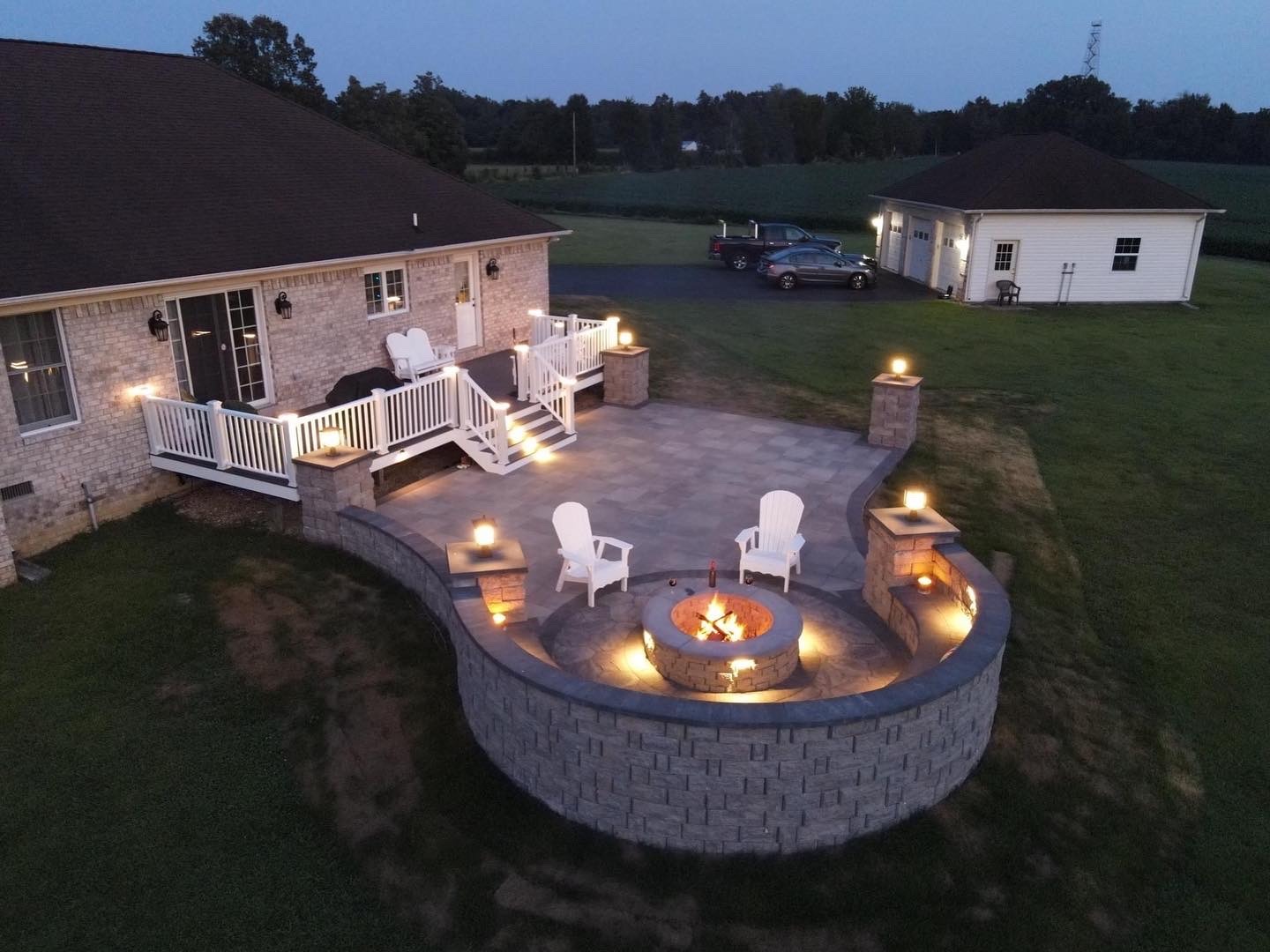
Lighting plays a powerful role in shaping how your yard feels and functions after dark. More than just a practical necessity, outdoor lighting enhances safety, defines space, and creates ambiance—turning your landscape into an inviting retreat at night.
Strategically placed pathway lights can guide movement, define the edges of walkways, and improve visibility for guests. Uplighting trees adds drama by drawing the eye upward while casting a warm glow across stone walls or architectural features, adding richness and dimension to your space.
But great landscape lighting goes beyond the basics. Each area of your yard deserves its own lighting strategy. A dining area, for example, benefits from soft, diffused lighting that creates a cozy, intimate vibe—perfect for evening meals or relaxed conversation. In contrast, garden zones might call for accent lighting to highlight textures, foliage, or seasonal blooms, giving your plants a second life after dark.
With the rise of smart lighting systems, you now have even more control over your outdoor environment. Adjust brightness, switch colors, or automate schedules—all from your phone—to suit your mood or the occasion. Whether you’re hosting a lively gathering, enjoying a quiet night alone, or simply adding curb appeal, smart outdoor lighting adds flexibility and convenience.
When thoughtfully designed, your lighting not only enhances the beauty of your landscape but also extends the time you can enjoy it. It’s the final touch that brings your outdoor space to life, long after the sun goes down.
Upgrade with Water Features and Swimming Pools
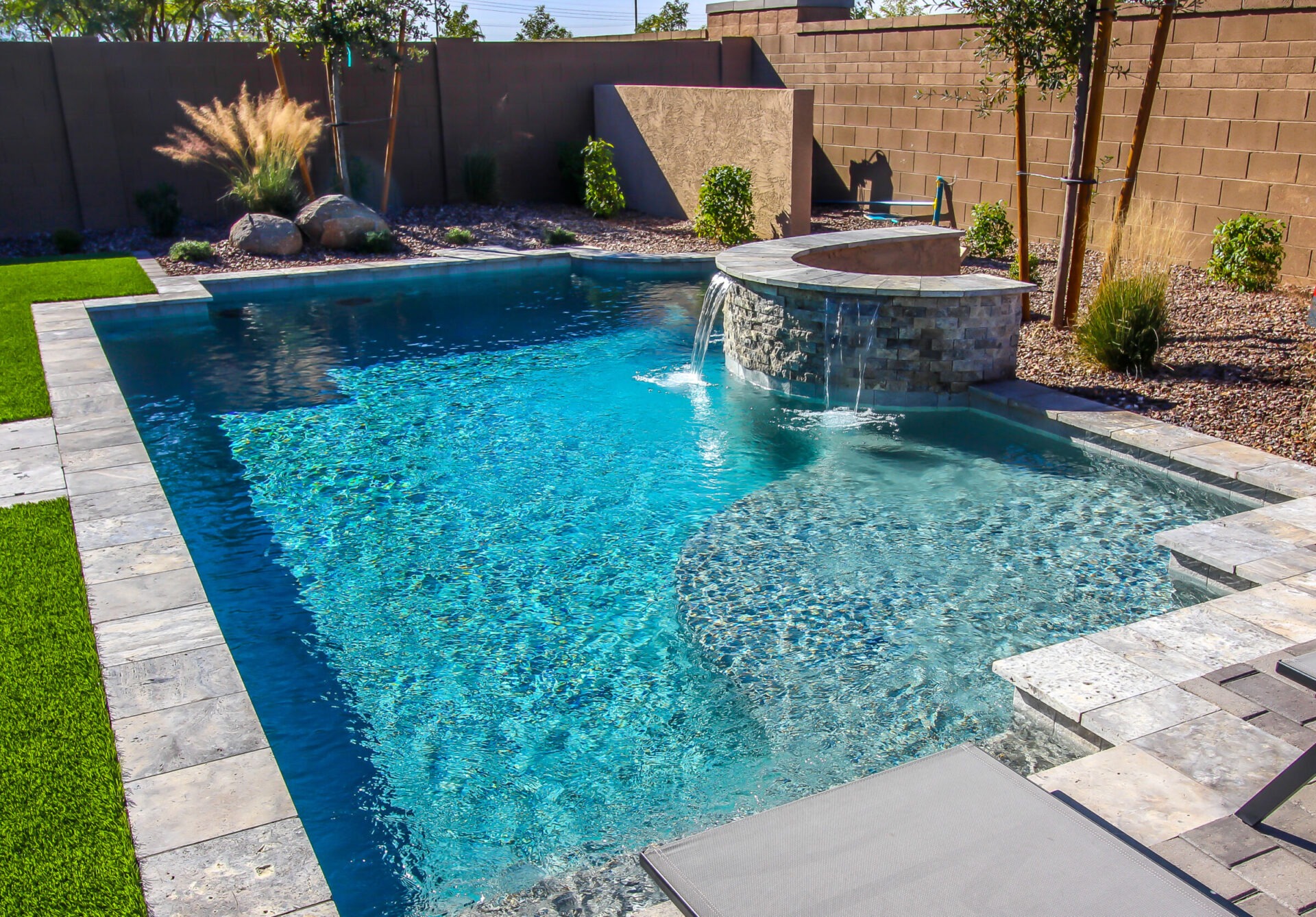
Water draws the eye and changes the rhythm of a space. Its sound softens the background, its movement adds energy, and its surface reflects light in ways that make a yard feel more alive. Even a small feature can shift the entire mood, turning your quiet corners into purposeful, calming focal points.
Pools and Spas
Pools and spas can anchor your entire outdoor layout when designed with intention. A curved, lagoon-style pool might blend into a lush garden setting, while clean-lined geometric designs suit a modern build. Built-in seating, shallow sun shelves, or raised spas that flow into the main pool add both comfort and a custom look.
Placement is important. A well-positioned pool aligns with patios, walkways, and sightlines, making it feel like a natural part of your landscape instead of a standalone feature.
Fountains and Water Gardens
If a full pool isn’t on your list, there are still plenty of ways to bring the calming effect of water into your yard. A stone fountain can add elegance and movement near an entryway or seating area. A compact pond surrounded by native plants offers a peaceful, tucked-away corner. Even a simple bubbling urn or basin can soften background noise and create a more relaxed atmosphere.
These smaller features are often easier to maintain and fit seamlessly into tight spaces, making them a smart choice for Fort Washington properties of any size.
Landscape Maintenance and Sustainability in Fort Washington
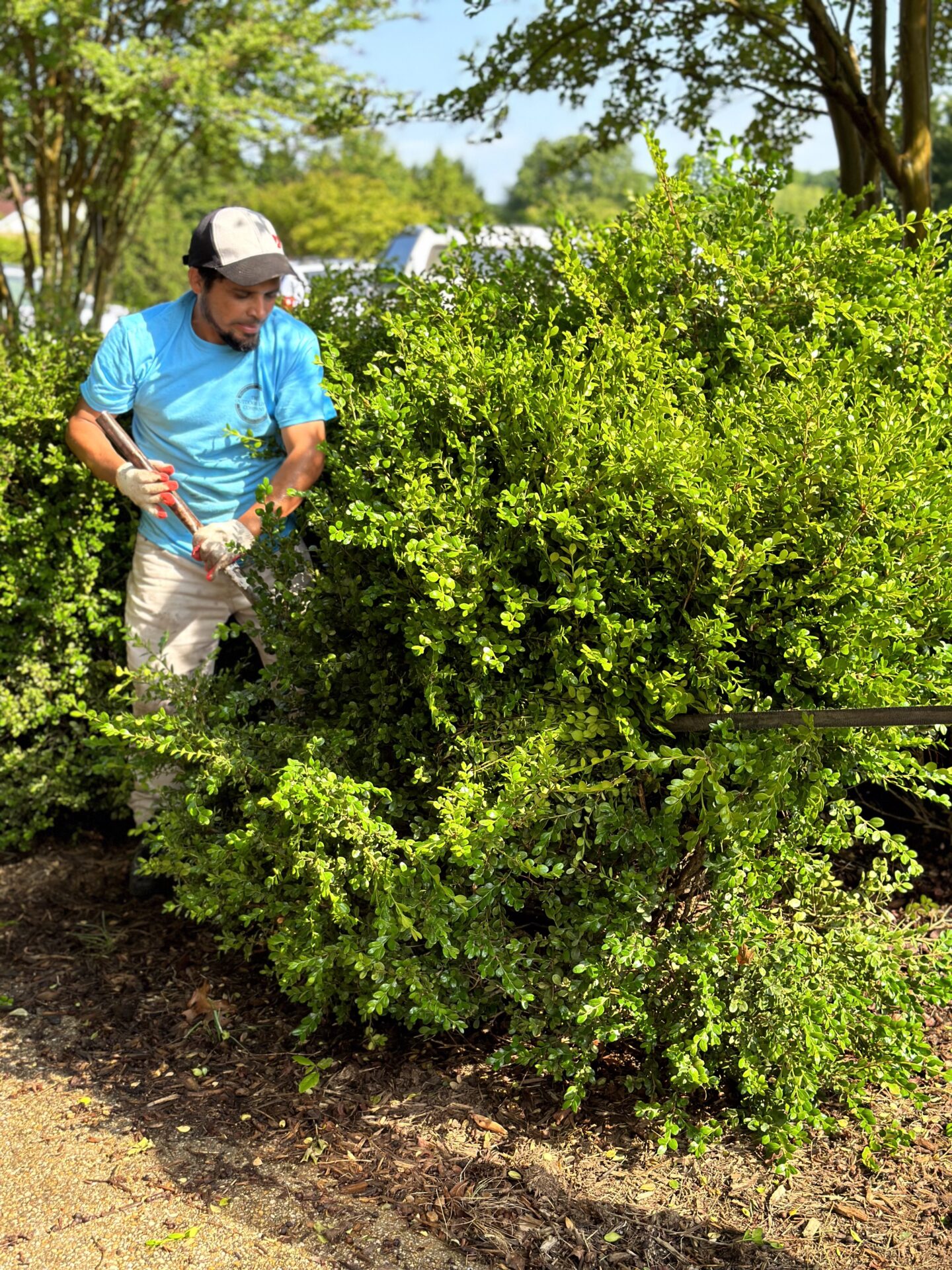
A great landscape shouldn’t peak the day it’s finished, it should grow into itself over time. That kind of long-term impact starts with smart planning: choosing the right plants, using durable materials, and designing with the seasons in mind. It also means thinking ahead about how much care each element will need, and making choices that work with your schedule, not against it.
With the right setup from the beginning, your outdoor space can keep its shape, color, and character for years without becoming a constant chore.
Year-Round Care Plans
Every yard needs upkeep, but that doesn’t mean it has to be hard. A solid maintenance plan keeps things healthy and looking sharp without becoming a full-time job. That might include trimming, fertilizing, adjusting irrigation, and keeping unwanted pests away.
Lawns, garden beds, trees, and shrubs all have their own care routines. Some need regular trimming, and others just need a seasonal check-in. Planning for that early (before anything’s even planted) helps avoid surprises and makes it easier to keep everything in shape without getting overwhelmed. A little upfront prep means a smoother path to a great-looking yard all the time.
Eco-Friendly Design
Sustainable design makes your landscape stronger, easier to manage, and more efficient over time. By working with the natural conditions in Fort Washington, you can create an outdoor space that practically takes care of itself.
Start with native plants, which are naturally suited to the local climate. They require less water, resist pests more effectively, and thrive without heavy maintenance—making them a smart, low-impact choice. To support them, smart irrigation systems can automatically adjust watering based on real-time weather conditions, ensuring your garden gets just the right amount of moisture. You can also take it a step further by installing rain barrels to collect and reuse water, adding another layer of efficiency.
Healthy soil is key to any successful landscape. Using compost and organic treatments improves soil structure and nutrients without relying on synthetic chemicals. And by grouping plants according to their water needs, you encourage natural balance, reduce waste, and simplify your care routine.
When these elements work together, your yard becomes more eco-friendly, resilient, beautiful, and far less demanding to maintain.
Freshening Things Up
Landscapes don’t need to stay frozen in time. Updating your space with the changing seasons (or as your needs or styles change) can keep your design current and interesting. Consider swapping out planters, updating your lighting, or testing a new color palette with your blooming plants.
These little changes help your yard evolve with you without requiring a major overhaul every few years.
Choosing the Right Professionals
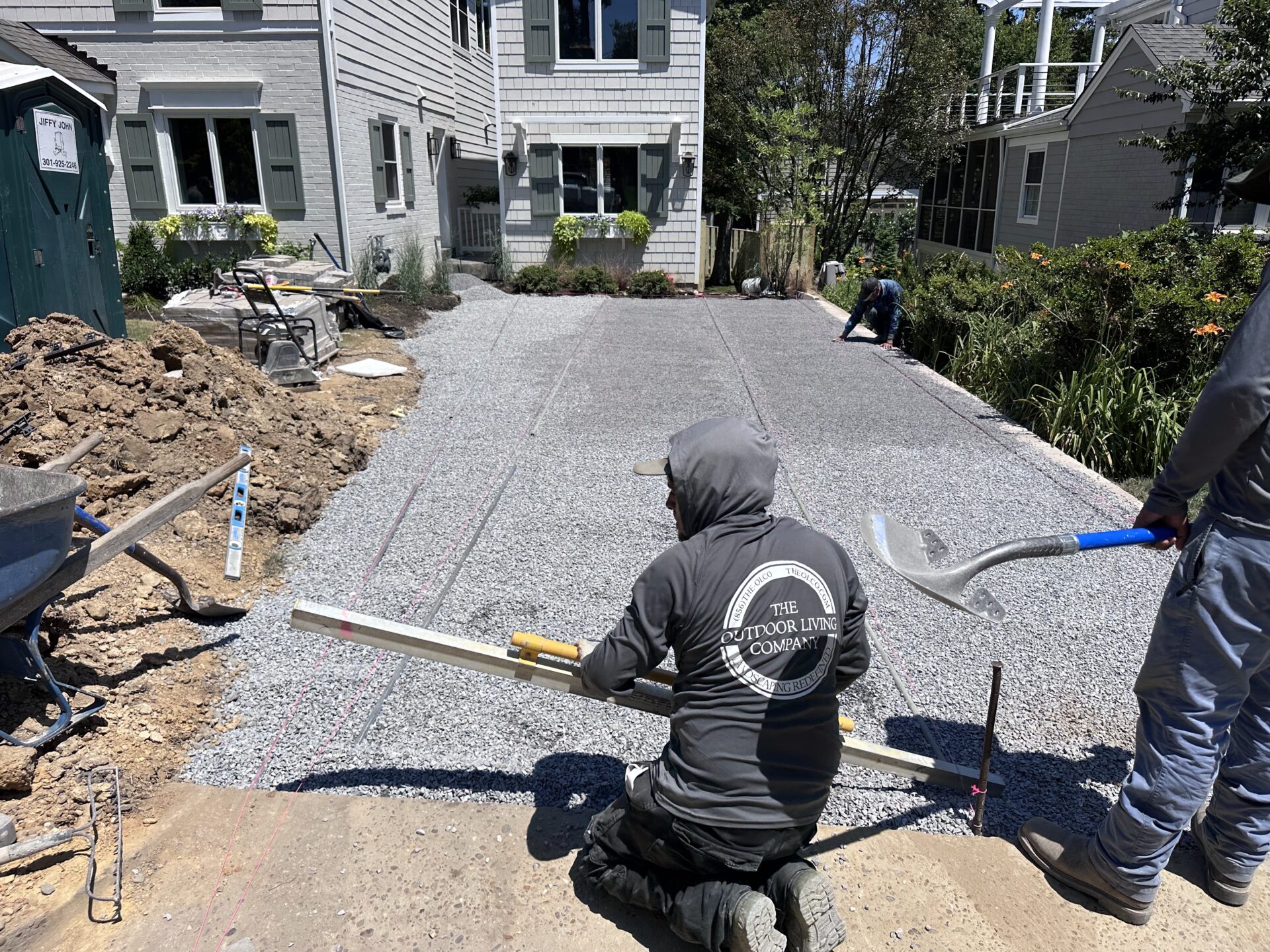
Even the best design falls flat without the right hands behind it. What turns a plan into a standout space is a team that knows Fort Washington inside and out, pays attention to the details, and builds with care and consistency. It’s not only about skill, it’s about knowing what works here, from the soil to the seasons. The right crew brings local knowledge, reliable craftsmanship, and a commitment to seeing your vision through, start to finish.
Local Experience Matters
Your landscape is only as strong as the crew behind it. Local experience matters, especially when you’re dealing with certain factors specific to Fort Washington. A local expert can help avoid common headaches and recommend materials and plants that work in this area. They’ve seen what succeeds and what doesn’t, and that insight is worth a lot. But the real difference comes from working with a team who listens closely, plans thoughtfully, and cares about getting every detail right. Don’t forget to ask for references, photos of past work, and honest answers about how they’ll approach your project.
Personalized Approach
Skip the one-size-fits-all approach. A great team will dig deeper and ask smart questions to understand how you live, and offer solutions catered to what matters to you. They’ll walk you through the process clearly, offer real choices, and make sure you feel informed and confident at every step.
Clear communication is key. So is a collaborative spirit.
Solid Reputation
Online reviews, word of mouth, and seeing past projects for yourself can give you a real sense of how a team works. Look for signs of consistency, good follow-through, and how they handle any bumps along the way. Online reviews, referrals, and firsthand visits to past projects can tell you a lot more than polished portfolios ever will. Pay attention to how a team communicates, how often they deliver on time, and how they respond when something doesn’t go according to plan. That kind of track record matters just as much as the end result. See why so many Fort Washington homeowners trust us to shape outdoor spaces that feel like home, with landscapes that hold up, evolve, and feel like they’ve always been there.
Choosing the right professionals isn’t about the final product—it’s about the experience of getting there. When you work with our team at The Outdoor Living Company, you’re not starting with a blank slate, you’re starting with experience that knows how to read a space and bring out its potential.
Request a quote from our team to start your project and get the job done right. No guesswork, no shortcuts. Just thoughtful designs that live as well as they look.
Tags: